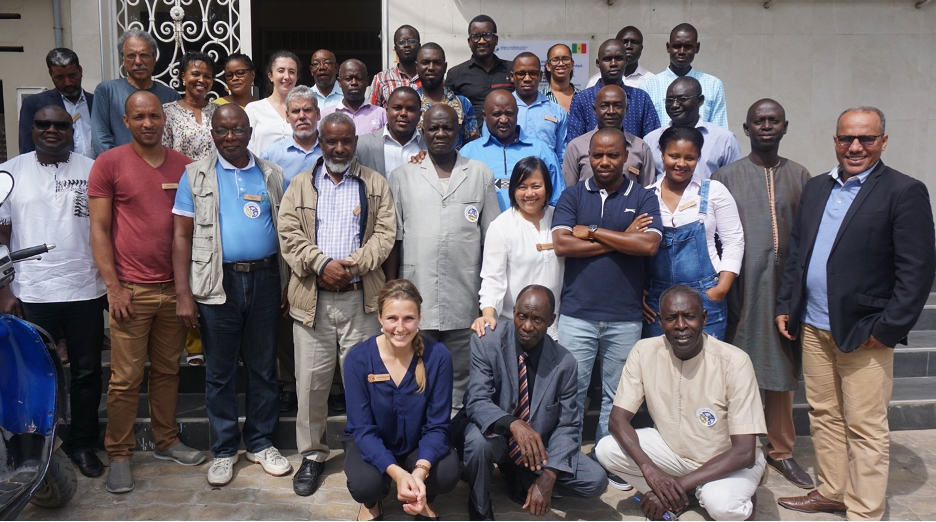Fisheries have to be managed if they are not to end up overexploiting their resource base. Yet, how often have we heard that reasonable effort control or other essential management tools cannot be implemented because “there are no data”? Fisheries scientists have worked for decades on how to overcome this issue. Some scientists have been developing stock assessment methods with limited requirements, while others have been working on creating databases with data useful for assessing any exploited stock in the world.
These efforts converged during the training course entitled “Utilisation de la méthode CMSY pour l’évaluation des stocks ouest-africains” held in September 23-27 2019 in Dakar, Senegal, hosted by the Regional Sub-Commission for Fisheries (Commission Sous-Régionale des Pêches, CSRP) with the support of the MAVA Foundation, for participants from Cape Verde, The Gambia, Guinea, Guinea-Bissau, Liberia, Mauritania, Senegal and Sierra Leone. The stock assessment methods that were taught, CMSY and LBB, were developed by Dr. Rainer Froese and colleagues. These methods require a minimum of data to provide estimates of B/BMSY, i.e., the current biomass of an exploited stock relative to the biomass that generates maximum sustainable yield (MSY).
The course was successful because delegates from each of the participating countries contributed applications of the CMSY and/or LBB method based on data that they brought along. A number of these applications should, however, be considered to be very preliminary. In the LBB case, the length-frequency (L/F) data analyzed did not necessarily reflect the wealth of L/F data available in the CRSP countries. In the CMSY cases, the national data used did not generally reflect the fact that the stock in question (e.g., of sardinella) may range over the Exclusive Economic Zones (EEZ) of two or more CRSP countries.

The short contributions presented in this report should be seen as tentative in terms of their specific results. However, they certainly express that the CMSY and LBB methods are well-suited for use in the CRSP region, and that the course participants will be using these methods in the future.
To illustrate the power of international cooperation and to obtain reliable assessments of small pelagic stocks in the CSRP area, a chapter has been included detailing how national data can and should be pooled into (sub-)national assessments of 14 shared stocks of small pelagic fishes. We hope that this chapter and the report as a whole will be found useful to all countries of the sub-region even though we translated contributions originally in French or Portuguese into English.
We hope that the general conclusions from these assessments will be that:
- There are enough L/F and catch data series in the CRSP region for stock assessments to be performed, i.e., it is no longer the case that “there are no data”; and
- Policymakers in the CRSP region must face the fact that assessing the major stocks in the region indicates overexploitation – a reduction of fishing effort is necessary to maintain abundant catches.
As editors of the report, and the Sea Around Us resource persons at this course, we take this opportunity to thank the MAVA Foundation, the CSRP, particularly Mr. Mika Diop, and the workshop participants and authors of the contributions herein for their enthusiasm and diligence. We also thank the FishBase and SeaLifeBase teams of Quantitative Aquatics in Los Baños, the Philippines for help preparing the resilience and biomass ‘priors’ made available to the participants and for ensuring the coverage of the small pelagic species occurring in the region.
Maria Lourdes ‘Deng’ Palomares
Myriam Khalfallah
Jessika Woroniak
Daniel Pauly
Link to FCRR 28 (4) Assessments of marine fisheries resources in West Africa with emphasis on small pelagics
Tags: Daniel Pauly, Deng Palomares, faculty, FCRR, fisheries management, IOF Research Associates, IOF students, Publications, Research, Sea Around Us, West Africa